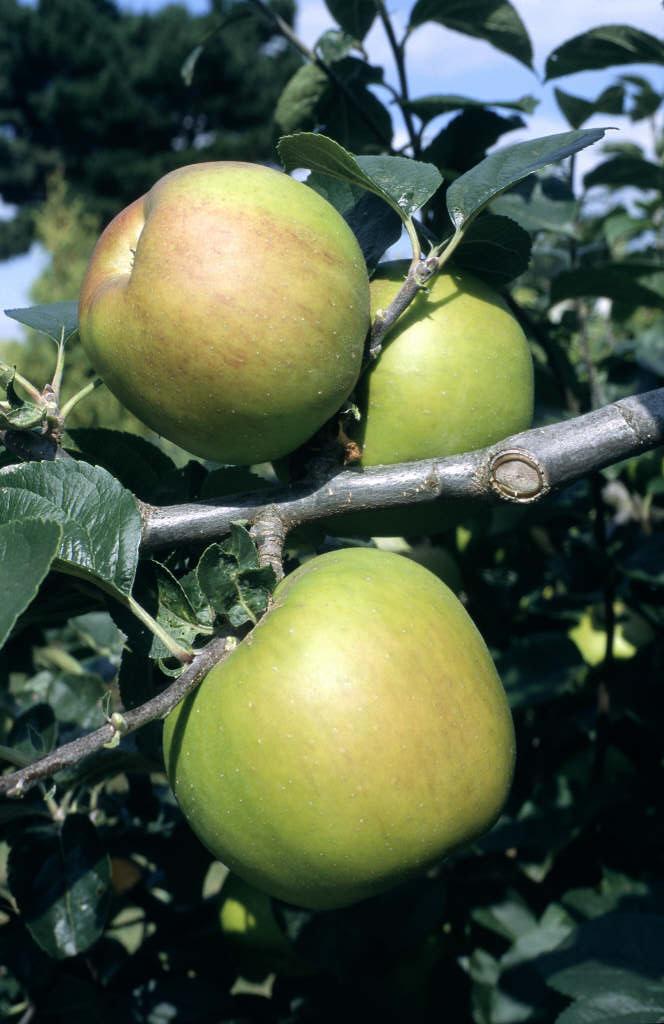Malus domestica 'Blenheim Orange' (C/D)

apple 'Blenheim Orange'
A culinary and dessert cultivar in pollination group 3 and a triploid. This very vigorous tree is suitable for northerly, colder, higher rainfall areas. The light crops of apples have a yellow-green skin, becoming yellow and flushed orange-red, and a characteristic nutty flavour. Fruits can be used from late September for cooking and from October to December or January as an eater

Buy this plant
Size
Ultimate height
4–8 metresTime to ultimate height
5–10 yearsUltimate spread
4–8 metresGrowing conditions
Moisture
Moist but well–drained, Well–drainedpH
NeutralColour & scent
| Stem | Flower | Foliage | Fruit | |
| Spring | Pink | Green | ||
|---|---|---|---|---|
| Summer | Green | |||
| Autumn | Green | Red Yellow | ||
| Winter |
Position
- Full sun
- Partial shade
Aspect
West–facing or South–facing
Exposure
Sheltered Hardiness
H6Botanical details
- Family
- Rosaceae
- Native to GB / Ireland
- No
- Foliage
- Deciduous
- Habit
- Bushy
- Genus
Malus are small to medium-sized deciduous trees with showy flowers in spring and ornamental or edible fruit in autumn; some have good autumn foliage colour
- Name status
Accepted
- Horticultural Group
- Apples suitable for culinary use have a tart flavour and are best cooked or made into a puree
How to grow
Cultivation
It will crop best in a sunny situation. The height will depend on the rootstock and training method. Keep a clear area around the trunk of at least 60cm radius. Fruit thinning may be required. For more details see apple cultivation
Propagation
Propagate by chip budding or grafting onto a clonal rootstock for fruit. The rootstock used will largely determine the size of the tree
Suggested planting locations and garden types
- Cottage and informal garden
- Wildlife gardens
Pruning
Pruning apples according to age and training form; partial tip-berer
Pests
May be susceptible to aphids, including woolly aphid and rosy apple aphid, fruit tree red spider mite, codling moth and other caterpillars
Diseases
May be susceptible to apple canker, apple scab, blossom wilt, brown rot, fireblight, honey fungus and powdery mildews
Get involved
The Royal Horticultural Society is the UK’s leading gardening charity. We aim to enrich everyone’s life through plants, and make the UK a greener and more beautiful place.